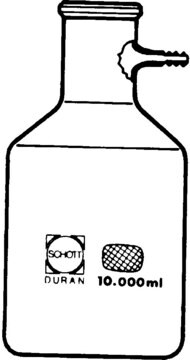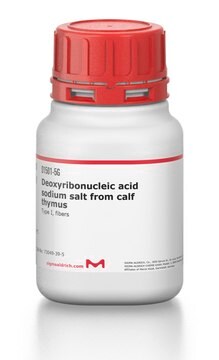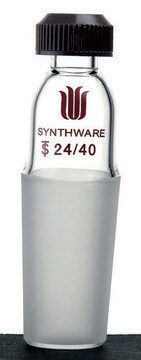SCC155
CFSMEo- Human Cystic Fibrosis Submucosal Gland Epithelial Cell Line
CFSMEo- human CF submucosal gland epithelial cell line was derived from a cystic fibrosis patient who was compound heterozygote for the ΔF508 and Q2X CFTR mutations.
Synonym(e):
CFSMEO
About This Item
Empfohlene Produkte
Biologische Quelle
human
Methode(n)
cell based assay: suitable
cell culture | mammalian: suitable
Versandbedingung
ambient
Verwandte Kategorien
Allgemeine Beschreibung
CFSMEo- is a human tracheobronchial submucosal gland epithelial cell line isolated from an individual with CF, who was compound heterozygote for the ΔF508 and Q2X CFTR mutations . ΔF508 mutation is a trinucleotide deletion that results in loss of a phenylalanine at amino acids 508 (ΔF508) in the CFTR protein. This mutation accounts for ~66% of all CF alleles . Q2X mutation is a rare CF mutation in exon 1 of the CFTR gene in which the second codon (CAG) is mutated into the stop codon UAG. The CFSMEo- cell line is the result of pooled colonies that arose from immortalization of the human CF tracheobronchial submucosal gland cells with the origin-of-replication defective SV40 plasmid (pSVori-) .
CFSMEo- retains the characteristic cobblestone morphology of epithelial cells along with cytokeratin expression and the ability to form tight junctions. The cell line expresses vestigial amounts of CFTR mRNA transcripts but does not express detectable levels of CFTR protein . CFSMEo- lacks cAMP-induced Cl- currents .
Beschreibung der Zelllinie
Anwendung
Qualität
• Cells are tested by PCR and are negative for HPV-16, HPV-18, Hepatitis A, C, and HIV-1 & 2 viruses as assessed by a Human Essential CLEAR panel by Charles River Animal Diagnostic Services.
• Cells are negative for mycoplasma contamination.
• Each lot of cells is genotyped by STR analysis to verify the unique identity of the cell line.
Lagerung und Haltbarkeit
Haftungsausschluss
Unless otherwise stated in our catalog or other company documentation accompanying the product(s), our products are intended for research use only and are not to be used for any other purpose, which includes but is not limited to, unauthorized commercial uses, in vitro diagnostic uses, ex vivo or in vivo therapeutic uses or any type of consumption or application to humans or animals.
Lagerklassenschlüssel
6.2 - Infectious substances
WGK
WGK 1
Flammpunkt (°F)
Not applicable
Flammpunkt (°C)
Not applicable
Analysenzertifikate (COA)
Suchen Sie nach Analysenzertifikate (COA), indem Sie die Lot-/Chargennummer des Produkts eingeben. Lot- und Chargennummern sind auf dem Produktetikett hinter den Wörtern ‘Lot’ oder ‘Batch’ (Lot oder Charge) zu finden.
Besitzen Sie dieses Produkt bereits?
In der Dokumentenbibliothek finden Sie die Dokumentation zu den Produkten, die Sie kürzlich erworben haben.
Artikel
16HBE14o- human bronchial epithelial cells used to model respiratory epithelium for the research of cystic fibrosis, viral pulmonary pathology (SARS-CoV), asthma, COPD, effects of smoking and air pollution. See over 5k publications.
Unser Team von Wissenschaftlern verfügt über Erfahrung in allen Forschungsbereichen einschließlich Life Science, Materialwissenschaften, chemischer Synthese, Chromatographie, Analytik und vielen mehr..
Setzen Sie sich mit dem technischen Dienst in Verbindung.





